Investigating Planting Concrete Suitability by Evaluating the Physiological Indexes of Three Ground Cover Plants
Abstract
:1. Introduction
2. Materials and Methods
2.1. Raw Materials
2.2. Mix Proportions
2.3. Sample Preparation
2.4. Test Method
2.4.1. Compressive Strength Test
2.4.2. Void Ratio Test
2.4.3. Alkalinity of the Concrete
2.4.4. Vegetation Test
Malondialdehyde (MDA)
Free Proline (Pro)
Soluble Protein (SP)
Chlorophyll (Chl)
Relative Electrical Conductivity (REC)
2.5. Soil Composition Test
2.6. Statistical Analysis
3. Results and Discussion
3.1. Void Ratio, Alkalinity, and Mechanical Properties
3.2. Plant Growth
3.3. Plant Physiological Experiments
3.3.1. Malondialdehyde
3.3.2. Free Proline
3.3.3. Soluble Protein
3.3.4. Chlorophyll
3.3.5. Relative Electrical Conductivity
3.4. Soil Composition
3.5. Statistical Results
4. Conclusions
Author Contributions
Funding
Institutional Review Board Statement
Informed Consent Statement
Data Availability Statement
Acknowledgments
Conflicts of Interest
References
- Hu, Y.; Dou, X.; Li, J.; Li, F. Impervious Surfaces Alter Soil Bacterial Communities in Urban Areas: A Case Study in Beijing, China. Front. Microbiol. 2018, 9, 226. [Google Scholar] [CrossRef]
- Wingeyer, A.; Mamo, M.; Schacht, W.; McCallister, D.; Sutton, P. Vegetation and Soil Responses to Concrete Grinding Residue Application on Highway Roadsides of Eastern Nebraska. J. Environ. Qual. 2018, 47, 554–561. [Google Scholar] [CrossRef] [Green Version]
- Bennai, F.; El Hachem, C.; Abahri, K.; Belarbi, R. Microscopic hydric characterization of hemp concrete by X-ray microtomography and digital volume correlation. Constr. Build. Mater. 2018, 188, 983–994. [Google Scholar] [CrossRef]
- Ouldkhaoua, Y.; Benabed, B.; Abousnina, R.; Kadri, E.-H. Experimental study on the reuse of cathode ray tubes funnel glass as fine aggregate for developing an ecological self-compacting mortar incorporating metakaolin. J. Build. Eng. 2020, 27, 100951. [Google Scholar] [CrossRef]
- Kubissa, W.; Jaskulski, R.; Reiterman, P. Ecological Concrete Based on Blast-Furnace Cement with Incorporated Coarse Recycled Concrete Aggregate and Fly Ash Addition. J. Renew. Mater. 2017, 5, 53–61. [Google Scholar] [CrossRef]
- Ivanka, N.G.; Ivana, B.; Vilma, B.; Lidija, K. Draining capability of single-sized pervious concrete. Constr. Build. Mater. 2018, 169, 252–260. [Google Scholar] [CrossRef]
- Rutkowska, G.; Wichowski, P.; Fronczyk, J.; Franus, M.; Chalecki, M. Use of fly ashes from municipal sewage sludge combustion in production of ash concretes. Constr. Build. Mater. 2018, 188, 874–883. [Google Scholar] [CrossRef]
- Alnahhal, M.F.; Alengaram, U.J.; Jumaat, M.Z.; Abutaha, F.; Alqedra, M.A.; Nayaka, R.R. Assessment on engineering properties and CO2 emissions of recycled aggregate concrete incorporating waste products as supplements to Portland cement. J. Clean. Prod. 2018, 203, 822–835. [Google Scholar] [CrossRef]
- Li, L.; Chen, M.; Zhou, X.; Lu, L.; Wang, Y.; Cheng, X. Evaluation of the preparation and fertilizer release performance of planting concrete made with recycled-concrete aggregates from demolition. J. Clean. Prod. 2018, 200, 54–64. [Google Scholar] [CrossRef]
- Hwang, V.; Masters, A.; Arocho, M.; Hwang, S. Fly ash-amended pervious concrete pavement followed by bamboo bioretention basin with Dracaena sanderiana for urban stormwater runoff control. Constr. Build. Mater. 2017, 132, 161–169. [Google Scholar] [CrossRef]
- Yuan, D.; Cui, L.; An, Y.; Chen, B.; Guo, X.; Li, Y.; Zhao, R.; Cui, S.; Wang, S.; Kou, Y. Investigating the pollutant-removal performance and DOM characteristics of rainfall surface runoff during different ecological concrete revetments treatment. Ecol. Indic. 2019, 105, 655–662. [Google Scholar] [CrossRef]
- Tang, V.T.; Fu, D.; Singh, R.P.; Rene, E.R.; Binh, T.N.; Sharma, A.K. Evaluating the effectiveness of ecological restoration of hard bank rivers: A case study from Shedu river port, China. J. Water Supply Res. Technol. 2019, 68, 368. [Google Scholar] [CrossRef]
- Kim, H.-H.; Lee, S.-K.; Park, C.-G. Carbon Dioxide Emission Evaluation of Porous Vegetation Concrete Blocks for Ecological Restoration Projects. Sustainability 2017, 9, 318. [Google Scholar] [CrossRef]
- Li, L.B.; Zhang, H.M.; Zhou, X.M.; Chen, M.X.; Lu, L.C.; Cheng, X. Effects of super absorbent polymer on scouring resistance and water retention performance of soil for growing plants in ecological concrete. Ecol. Eng. 2019, 138, 237–247. [Google Scholar] [CrossRef]
- Bao, X.; Liao, W.; Dong, Z.; Wang, S.; Tang, W. Development of Vegetation-Pervious Concrete in Grid Beam System for Soil Slope Protection. Materials 2017, 10, 96. [Google Scholar] [CrossRef] [PubMed]
- Zheng, X.; Ji, T.; Easa, S.M.; Ye, Y. Evaluating feasibility of using sea water curing for green artificial reef concrete. Constr. Build. Mater. 2018, 187, 545–552. [Google Scholar] [CrossRef]
- Liu, L.M.; Ji, J.N.; Guo, Y.S.; Chen, J.F. Use of ecological concrete for nutrient removal in coastal sediment and its effects on sediment microbial communities. Mar. Pollut. Bull. 2021, 162, 111911. [Google Scholar] [CrossRef] [PubMed]
- Chen, F.; Xu, Y.; Wang, C.; Mao, J. Effects of concrete content on seed germination and seedling establishment in vegetation concrete matrix in slope restoration. Ecol. Eng. 2013, 58, 99–104. [Google Scholar] [CrossRef]
- China Standards Publication. Utility Standard for Portland Cement GB175-2007; National Technical Committee for Cement Standardization (SAC/TC184); China Standards Press: Beijing, China, 2007. [Google Scholar]
- Yu, A.M.; Xu, Y.J. Progress in the application of nanocalcium carbonate in concrete. China Concr. 2016, 10, 53–56. Available online: https://kns.cnki.net/kcms/detail/detail.aspx?FileName=JZSJ201610008&DbName=CJFQ2016 (accessed on 6 December 2021).
- Li, G.S.; Gao, G.; Zhu, J.P.; Feng, C.L. Research progress of nano materials in cement-based materials. New Chem. Mater. 2018, 46, 15–19. [Google Scholar]
- Xing, X.X.; Xing, Y. Experimental Study on Application Properties of Macroporous Ecological Concrete without Sand. Adv. Mater. Res. 2011, 250–253, 901–905. [Google Scholar] [CrossRef]
- China Standards Publication. Standard for Test Method of Mechanical Properties on Ordinary Concrete GB/T 50081-2002; China Standards Press: Beijing, China, 2002. [Google Scholar]
- Kim, H.-H.; Park, C.-G. Plant Growth and Water Purification of Porous Vegetation Concrete Formed of Blast Furnace Slag, Natural Jute Fiber and Styrene Butadiene Latex. Sustainability 2016, 8, 386. [Google Scholar] [CrossRef]
- Xu, R.J.; Liu, R.G.; Yan, T.C. Experimental study on preparation and Properties of Plant porous concrete. Concr. Theor. Res. 2006, 12, 18–21. Available online: https://kns.cnki.net/kcms/detail/detail.aspx?FileName=HLTF200612005&DbName=CJFQ2006 (accessed on 6 December 2021).
- Roschlau, P.; Bernt, E.; Gruber, W. Enzymatic determination of total serum cholesterol. Z. Klin. Chem. Klin. Biochem. 1974, 20, 403–407. [Google Scholar]
- Chen, S. Injury of Membrane Lipid Peroxidation to Plant Cell. Plant Physiol. Commun. China 1991, 27, 84–90. [Google Scholar]
- Zhao, S.; Xu, C.; Zou, Q.; Meng, Q. Improvements of method for measurement for Malondialdehyde in plant tissues. Plant Physiol. Commun. China 1991, 30, 207–210. [Google Scholar]
- Qureshi, M.I.; Abdin, M.Z.; Ahmad, J.; Iqbal, M. Effect of long-term salinity on cellular antioxidants, compatible solute and fatty acid profile of Sweet Annie (Artemisia annua L.). Phytochemistry 2013, 95, 215–223. [Google Scholar] [CrossRef]
- Bates, L.S.; Waldren, R.P.; Teare, I.D. Rapid determination of free proline for water-stress studies. Plant Soil 1973, 39, 205–207. [Google Scholar] [CrossRef]
- Li, X.; Feng, W.; Zeng, X. Advances in Chlorophyll Fluorescence Analysis and Its Uses. Acta Bot. Boreali-Occident. Sin. China 2006, 26, 2186–2196. [Google Scholar]
- Wang, T.Q.; Chen XYu Jaime, A.T.; David, H.B. Physiological and biochemical responses of six herbaceous peony cultivars to cold stress. S. Afr. J. Bot. 2014, 94, 140–148. [Google Scholar] [CrossRef]
- Bro, R.; Smilde, A.K. Principal component analysis. Anal. Methods 2014, 6, 2812–2831. [Google Scholar] [CrossRef] [Green Version]
- Fu, T.C.; Yeih, W.; Chang, J.J.; Huang, R. The Influence of Aggregate Size and Binder Material on the Properties of Pervious Concrete. Adv. Mater. Sci. Eng. 2014, 2014, 1–17. [Google Scholar] [CrossRef] [Green Version]
- Huang, S.W.; Ji, J.Y.; Wang, Z.L.; Cheng, M.F. Study on the Potash Morphology and Plant Effectiveness of Main Soil in North China. Plant Nutr. Fertil. Sci. 1998, 4, 156–164. [Google Scholar]
- Andrews, M.; Sprent, J.I.; Raven, J.A.; Eady, P.E. Relationships between shoot to root ratio, growth and leaf soluble protein concentration of Pisum sativum, Phaseolus vulgaris and Triticum aestivum under different nutrient deficiencies. Plant Cell Environ. 1999, 22, 949–958. [Google Scholar] [CrossRef]
- Krishna Surendar, K.; Durga Devi, D.; Ravi, I.; Jeyakumar, P.; Velayudham, K. Water Stress Affects Plant Relative Water Content, Soluble Protein, Total Chlorophyll Content and Yield of Ratoon Banana. Int. J. Hortic. 2013, 3, 17. [Google Scholar] [CrossRef] [Green Version]
- Tang, W.; Mohseni, E.; Wang, Z. Development of vegetation concrete technology for slope protection and greening. Constr. Build. Mater. 2018, 179, 605–613. [Google Scholar] [CrossRef]
- Kaiser, H.F. An index of factorial simplicity. Psychometrika 1974, 39, 31–36. [Google Scholar] [CrossRef]
- Deans, C.A.; Behmer, S.T.; Fiene, J.; Sword, G.A. Spatio-Temporal, Genotypic, and Environmental Effects on Plant Soluble Protein and Digestible Carbohydrate Content: Implications for Insect Herbivores with Cotton as an Exemplar. J. Chem. Ecol. 2016, 42, 1151–1163. [Google Scholar] [CrossRef]
- Ma, W.-G.; Zhang, Z.-H.; Zheng, Y.-Y.; Pan, W.; Qiu, T.; Guan, Y.-J.; Hu, J. Determination of tobacco (Nicotiana tabacum) seed vigour using controlled deterioration followed by a conductivity test. Seed Sci. Technol. 2020, 48, 1–10. [Google Scholar] [CrossRef]
- Denise, G.; Lucas, S.M.; Juliana, V.; Clóvis, P.; Gabriela, S.; Solange, C.G.; Pomblum, V.J.; Rocha, J.B.T.; Farina, M. Importance of the lipid peroxidation biomarkers and methodological aspects FOR malondialdehyde quantification. Quim. Nova 2009, 32, 169–174. [Google Scholar]
- García, I.V.; Mendoza, R.E. Arbuscular mycorrhizal fungi and plant symbiosis in a saline-sodic soil. Mycorrhiza 2007, 17, 167–174. [Google Scholar] [CrossRef] [PubMed]
- Zhang, Y.F.; Wang, P.; Yang, Y.F. Arbuscularmycorrhizal fungi improve establishment of leymuschinensis in baresaline- alkaline soil: Implication onvegetation restoration of extremely degraded Land. J. Arid. Environ. 2011, 75, 773–778. [Google Scholar] [CrossRef]
- Kaushik, B.D.; Subhashini, D. Amelioration of salt-affected soils with blue–green algae: Improvement in soil properties. Proc. Indian Natl. Sci. Acad. 1985, 51, 386–389. [Google Scholar]
- Schobert, B. Is there an osmotic regulatory mechanism in algae and higher plants? J. Theor. Biol. 1977, 68, 17–26. [Google Scholar] [CrossRef]
- Lei, G.; Hu, X.; Guo, W.; Zhang, J.; Shu, Q.; Qi, L.H. Study on Application and Cultivation of Dwarf Bamboos Resources in China. World For. Res. 2019, 33, 60–66. [Google Scholar] [CrossRef]
- Yong, Y.Y.; Hu, C.M.; Xie, L.; Xiao, Q.W.; Wang, X.; Zhang, T.P.; Zheng, B.H. Effects of Pore Status of Plant Ecological Concrete on Plant Growth. J. South China Univ. Technol. 2006, 34, 12. [Google Scholar]

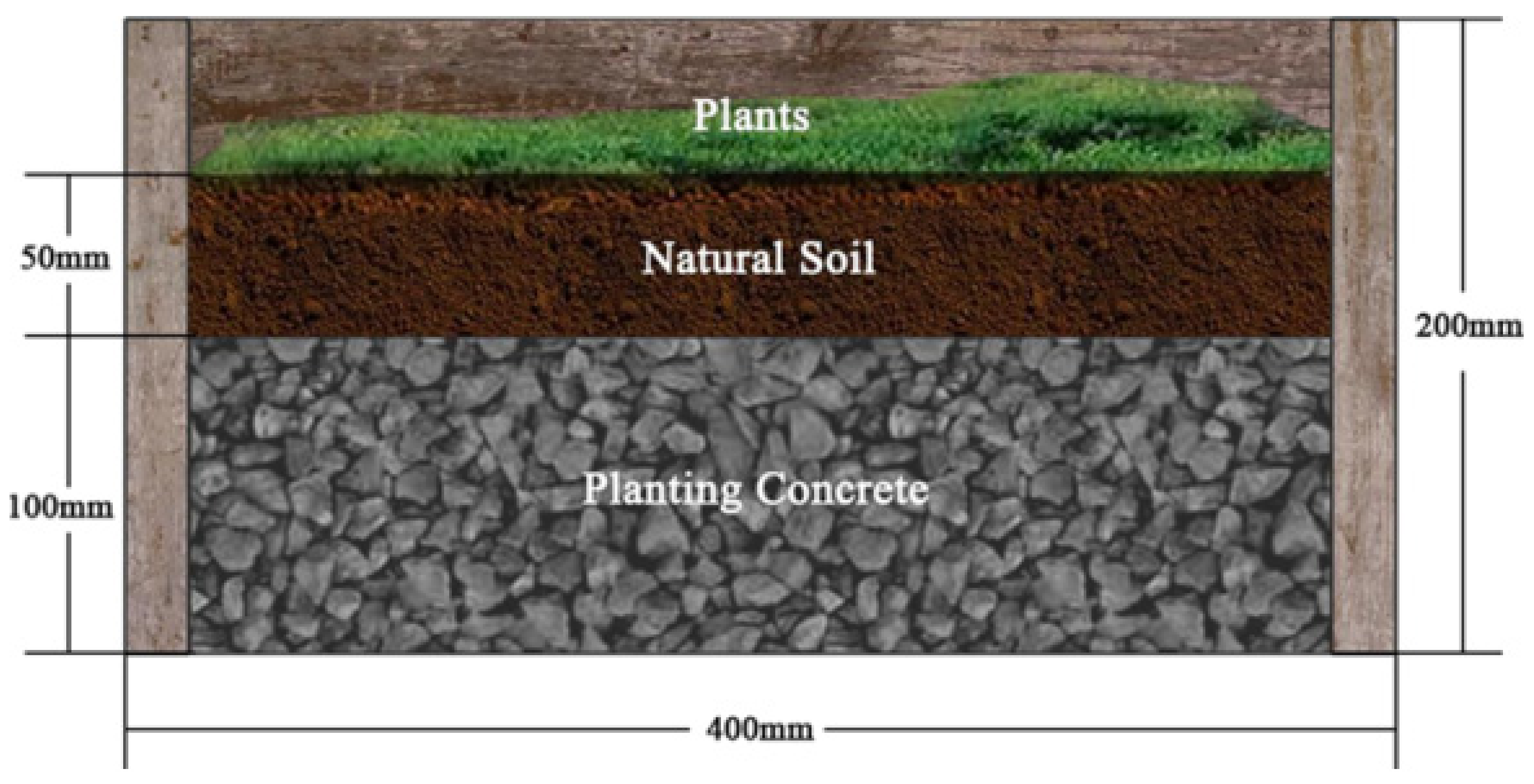


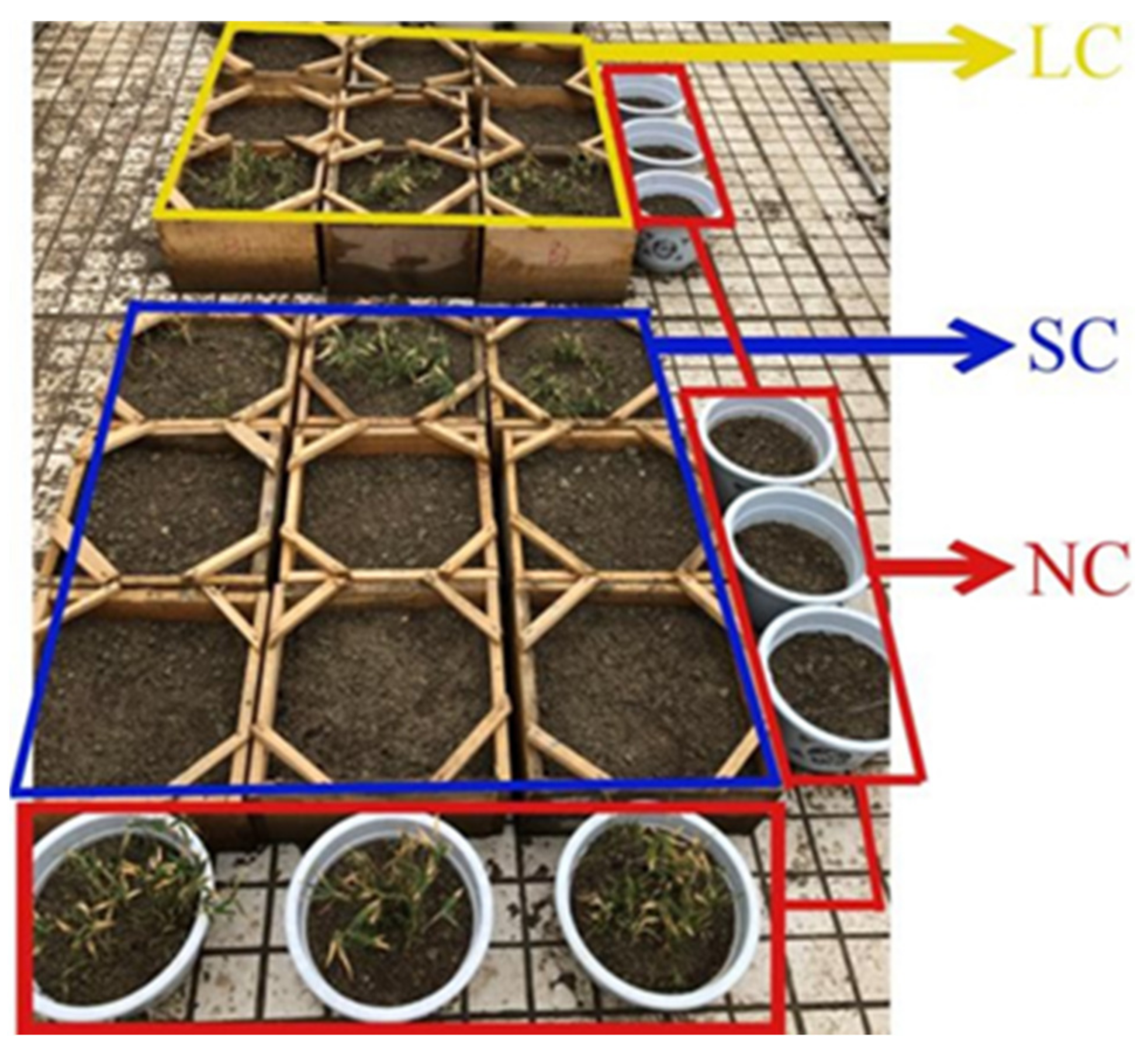
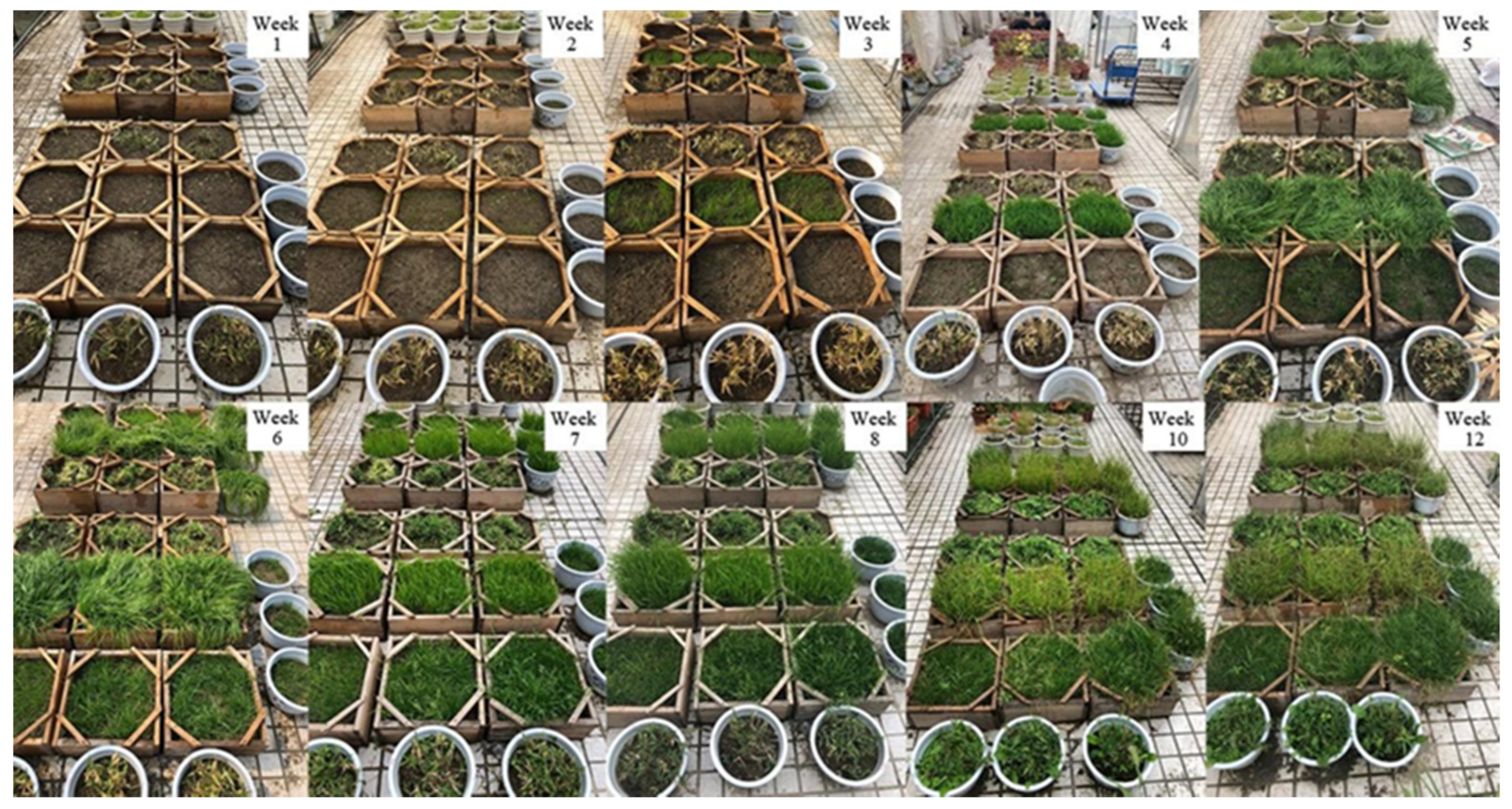
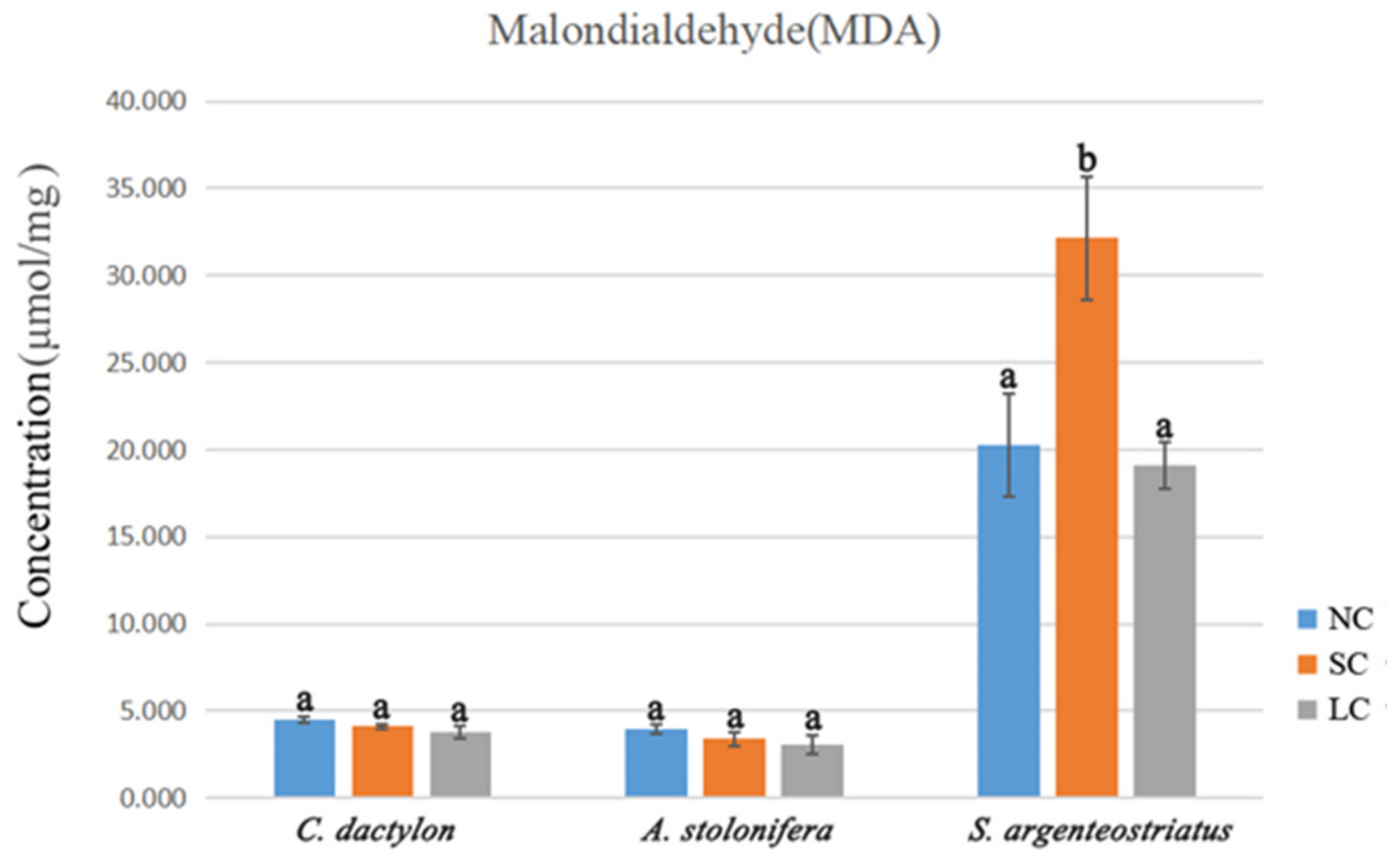

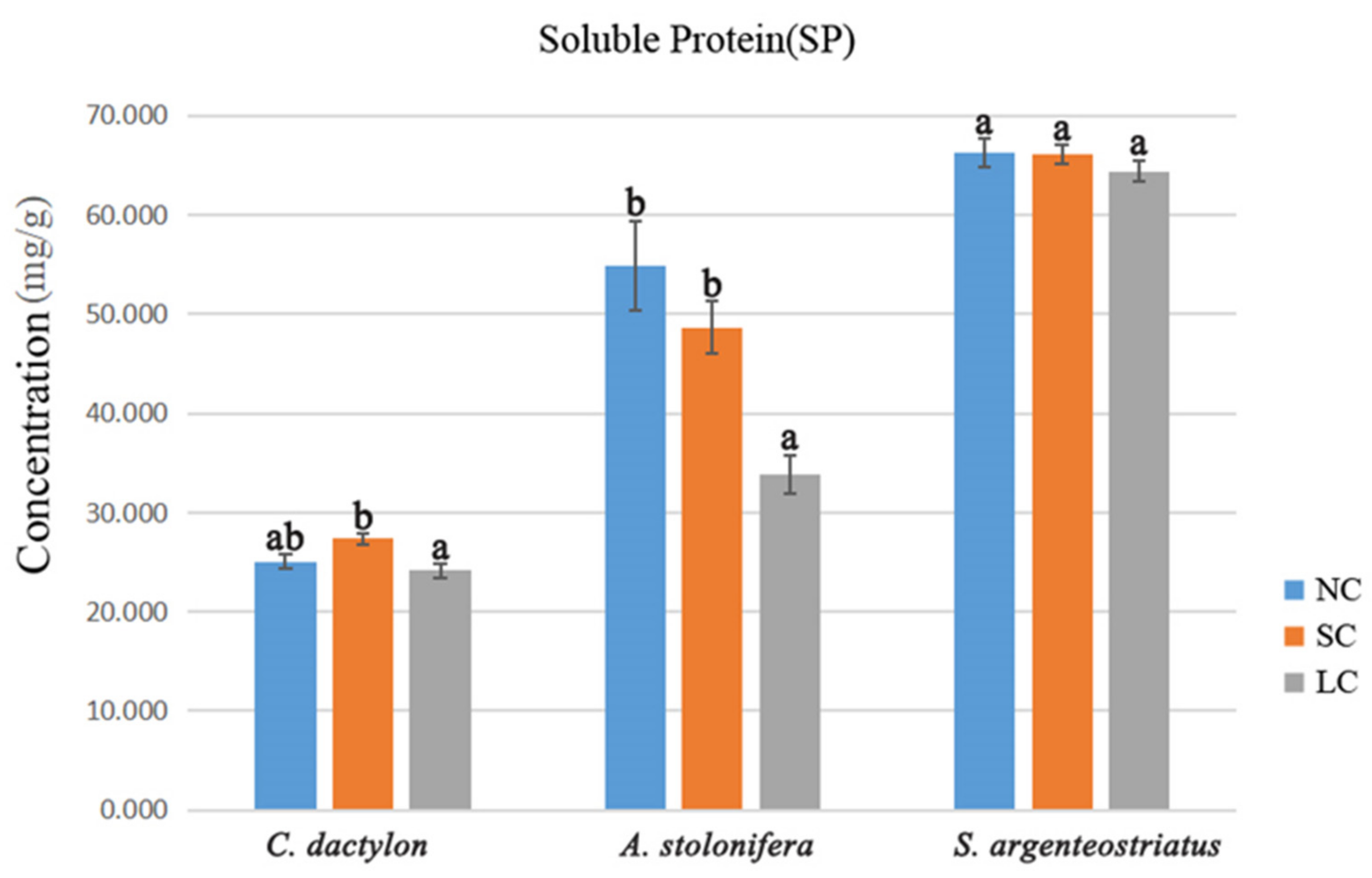
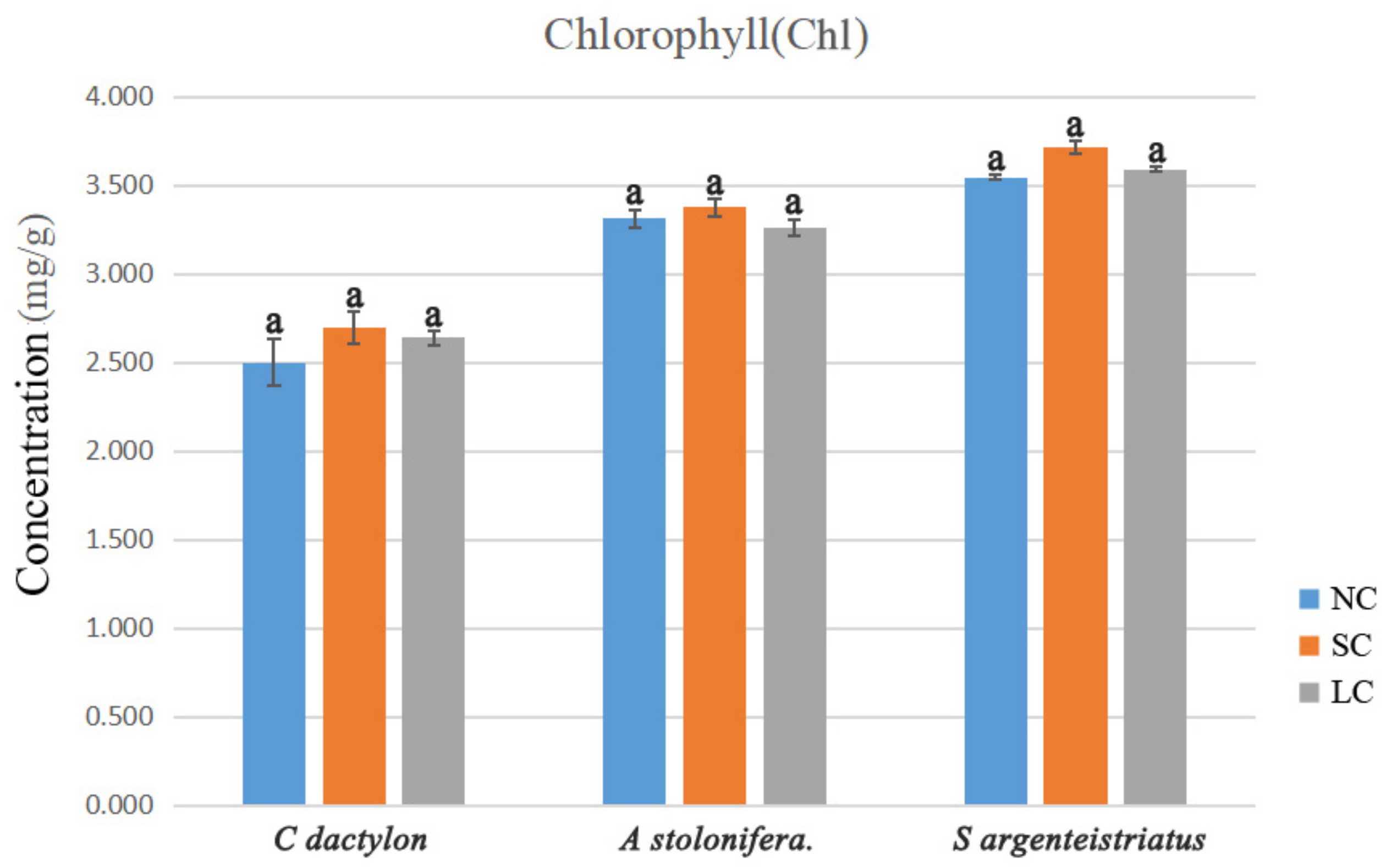
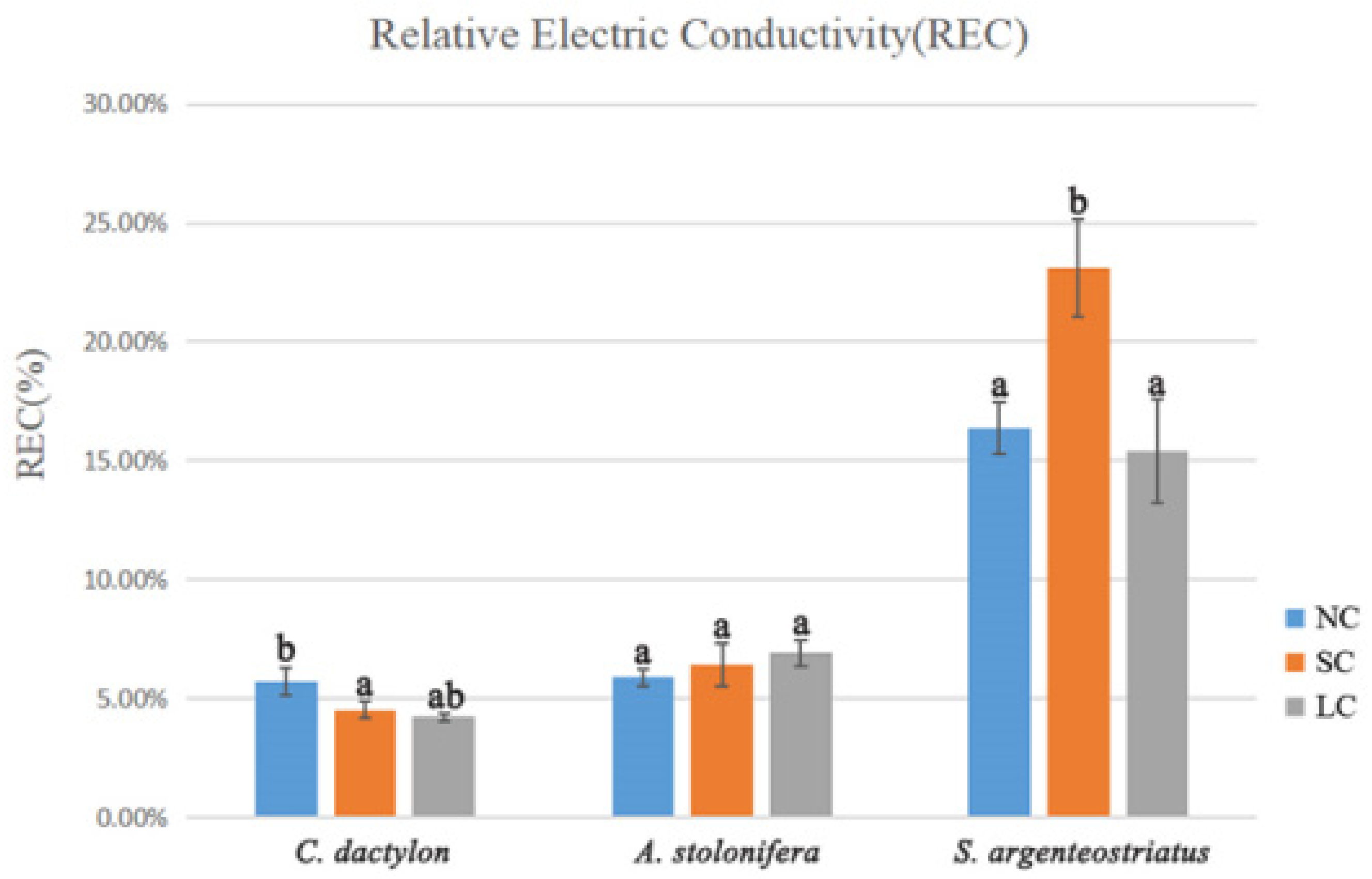
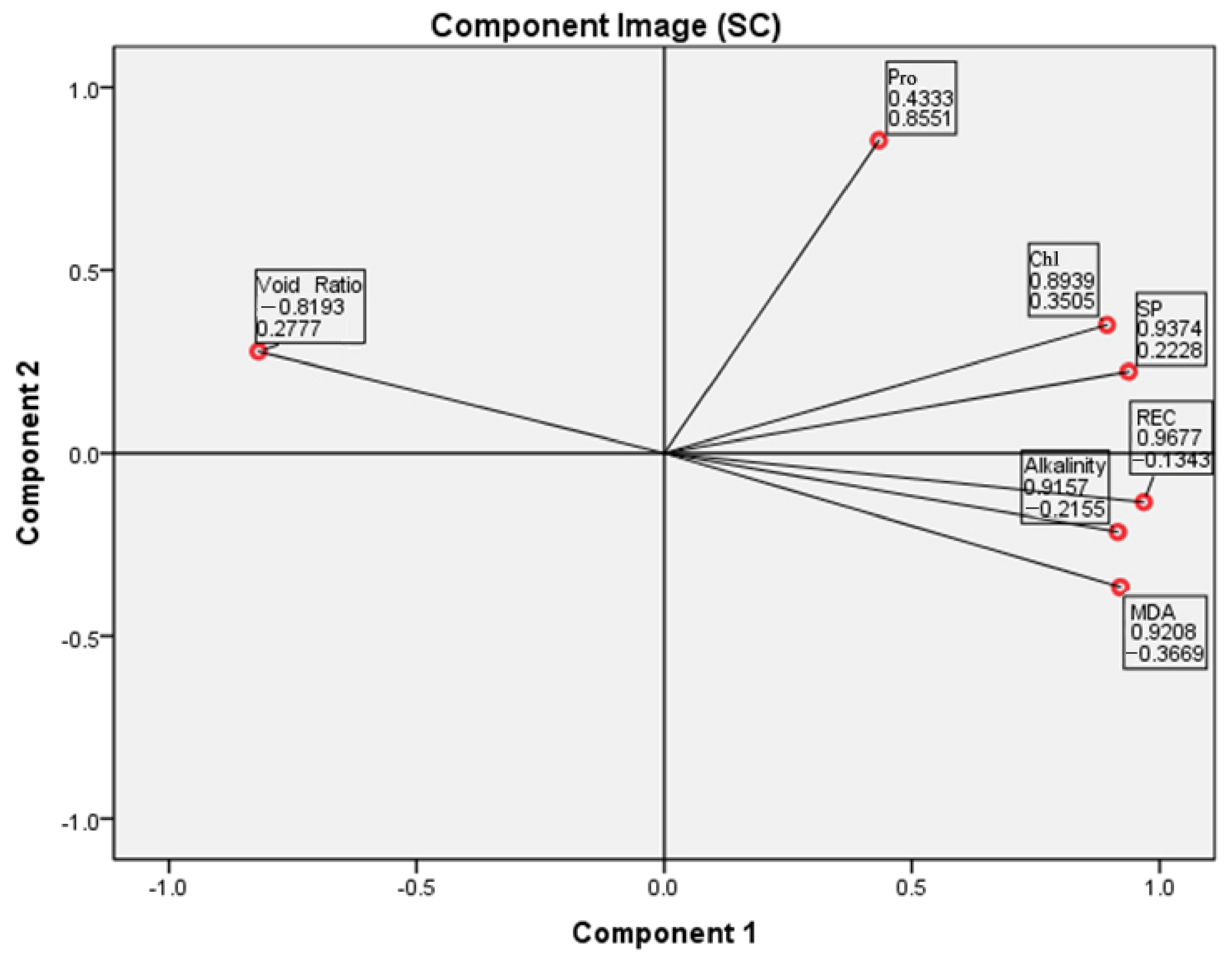
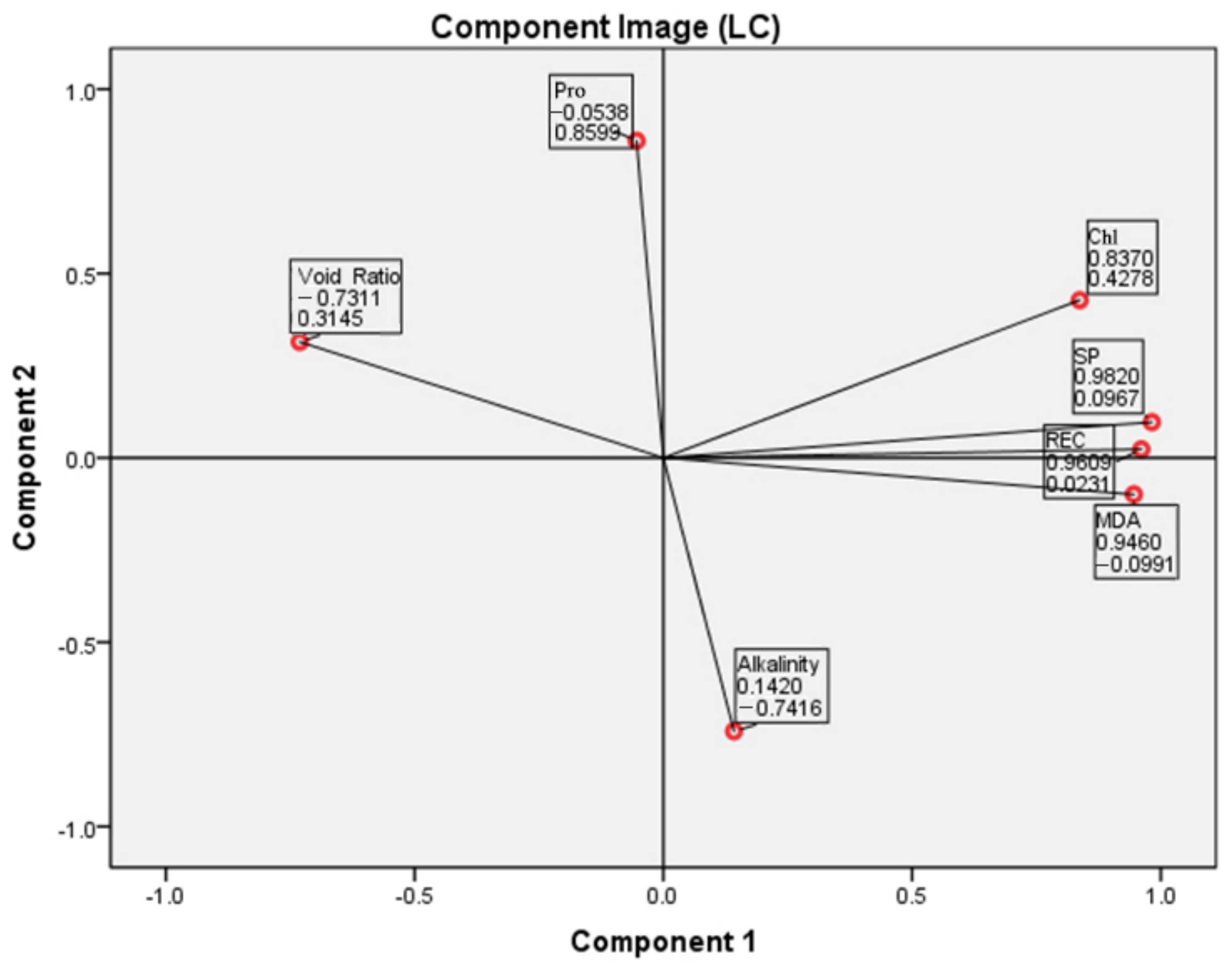
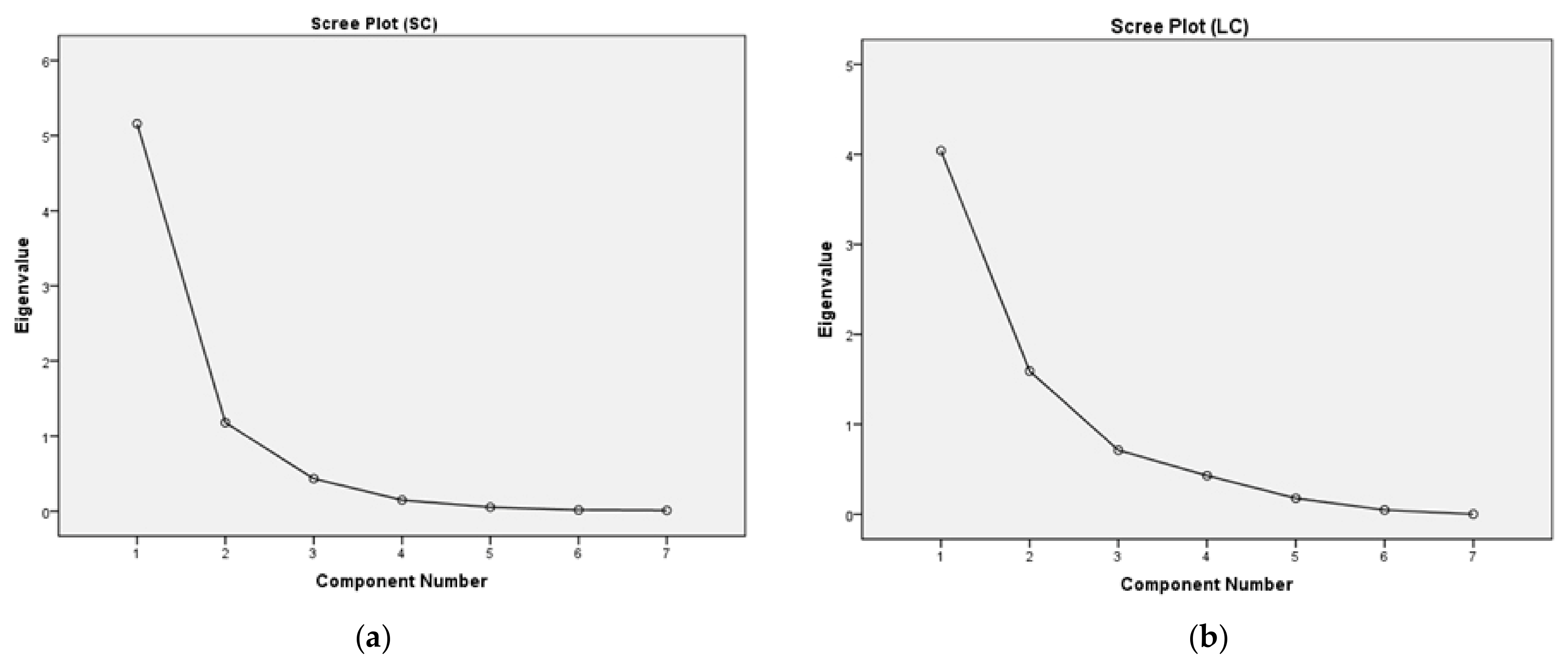
| Properties | Value | |
|---|---|---|
| Sulfur trioxide content (%) | 1.07 | |
| Magnesium oxide content (%) | 2.36 | |
| Fineness (m2/kg) | ≥300 | |
| Loss on ignition (%) | 2.04 | |
| Setting time | Initial setting time | 200 min |
| Final setting time | 260 min | |
| Compressive strength (MPa) | 3 days | 27 |
| 28 days | 51 |
| Composition. | Nano-Calcium Carbonate (Nano-CaCO3) | Biuret | Methylenediurea | Total Nitrogen | Water |
|---|---|---|---|---|---|
| Ratio | 7.5 | 0.9 | 6.6 | 41.5 | 43.5 |
| Mix Proportions | |||||||
|---|---|---|---|---|---|---|---|
| Group Number | Aggregate Size (mm) | Bulk Density of Aggregate (kg/m3) | Amount of Cement (kg/m3) | Water to Cement Ratio | Amount of Water (kg/m3) | PC Additive Dose (kg/m3) | PC Additive Dose (wt.% of Cement) |
| PC-S1 | 5–10 | 1575 | 215 | 0.35 | 75.00 | 4.5 | 2% |
| PC-S2 | 15–20 | 1555 | 250 | 0.40 | 100.00 | 5.0 | |
| Group Number | Particle Size (mm) | 28-d Average Strength (MPa) | SD | Void Ratio (%) | SD | pH Value | SD |
|---|---|---|---|---|---|---|---|
| PC-S1 | 5–10 | 13.7 | 1.01 | 30.5 | 1.33 | 8.8 | 0.18 |
| PC-S2 | 15–20 | 11.3 | 0.97 | 31.9 | 2.12 | 8.5 | 0.30 |
| Compressive Strength | Alkalinity | Void Ratio | MDA | Pro | REC | SP | Chl | ||
|---|---|---|---|---|---|---|---|---|---|
| Compressive Strength | Pearson Test | 1 | |||||||
| Sig. | |||||||||
| Alkalinity | Pearson Test | 0.090 | 1 | ||||||
| Sig. | 0.804 | ||||||||
| Void Ratio | Pearson Test | −0.010 | −0.757 * | 1 | |||||
| Sig. | 0.979 | 0.011 | |||||||
| MDA | Pearson Test | 0.280 | 0.918 ** | −0.811 ** | 1 | ||||
| Sig. | 0.466 | 0.000 | 0.008 | ||||||
| Pro | Pearson Test | −0.244 | 0.217 | −0.234 | 0.065 | 1 | |||
| Sig. | 0.527 | 0.575 | 0.545 | 0.869 | |||||
| REC | Pearson Test | 0.084 | 0.869 ** | −0.857 ** | 0.941 ** | 0.320 | 1 | ||
| Sig. | 0.830 | 0.002 | 0.003 | 0.000 | 0.400 | ||||
| SP | Pearson Test | 0.127 | 0.815 ** | −0.594 | 0.802 ** | 0.527 | 0.861 ** | 1 | |
| Sig. | 0.745 | 0.007 | 0.092 | 0.009 | 0.145 | 0.003 | |||
| Chl | Pearson Test | 0.155 | 0.729 * | −0.547 | 0.711 * | 0.613 | 0.800 ** | 0.9690 ** | 1 |
| Sig. | 0.691 | 0.026 | 0.128 | 0.032 | 0.079 | 0.010 | 0.000 |
| Compressive Strength | Alkalinity | Void Ratio | MDA | Pro | REC | SP | Chl | ||
|---|---|---|---|---|---|---|---|---|---|
| Compressive Strength | Pearson Test | 1 | |||||||
| Sig. | |||||||||
| Alkalinity | Pearson Test | −0.061 | 1 | ||||||
| Sig. | 0.868 | ||||||||
| Void Ratio | Pearson Test | −0.093 | −0.404 | 1 | |||||
| Sig. | 0.798 | 0.247 | |||||||
| MDA | Pearson Test | −0.132 | 0.317 | −0.666 | 1 | ||||
| Sig. | 0.734 | 0.406 | 0.050 | ||||||
| Pro | Pearson Test | −0.028 | −0.006 | 0.285 | −0.129 | 1 | |||
| Sig. | 0.943 | 0.987 | 0.457 | 0.741 | |||||
| REC | Pearson Test | −0.201 | 0.290 | −0.614 | 0.838 ** | −0.016 | 1 | ||
| Sig. | 0.604 | 0.449 | 0.078 | 0.005 | 0.966 | ||||
| SP | Pearson Test | −0.194 | 0.262 | −0.586 | 0.952 ** | −0.004 | 0.927 ** | 1 | |
| Sig. | 0.617 | 0.495 | 0.097 | 0.000 | 0.992 | 0.000 | |||
| Chl | Pearson Test | −0.102 | 0.238 | −0.283 | 0.720 * | 0.279 | 0.824 ** | 0.880 ** | 1 |
| Sig. | 0.793 | 0.538 | 0.460 | 0.029 | 0.468 | 0.006 | 0.002 |
| Treatment | TP (g/kg) | RA (%) | TK (g/kg) | RA (%) | SOM (g/kg) | RA (%) | TN (g/kg) | RA (%) | AN (mg/kg) | RA (%) | pH Value | |
|---|---|---|---|---|---|---|---|---|---|---|---|---|
| Original | 0.677 | 40.66 | 62.78 | 1.00 | 98.69 | 6.2 | ||||||
| C. dactylon | NC | 0.196 | 71.0 | 18.17 | 55.3 | 41.91 | 33.2 | 0.84 | 16.0 | 64.78 | 34.3 | 7.6 |
| SC | 0.203 | 70.0 | 18.13 | 55.4 | 32.90 | 47.6 | 0.67 | 33.0 | 61.53 | 37.6 | 8.1 | |
| LC | 0.208 | 69.2 | 17.30 | 57.4 | 37.30 | 40.1 | 0.66 | 34.0 | 56.04 | 43.2 | 7.8 | |
| A. stolonifera | NC | 0.196 | 71.0 | 14.37 | 64.6 | 32.90 | 47.6 | 0.26 | 74.0 | 20.49 | 79.2 | 7.6 |
| SC | 0.193 | 71.4 | 14.40 | 64.6 | 38.77 | 38.2 | 0.81 | 19.0 | 72.01 | 27.0 | 7.9 | |
| LC | 0.197 | 70.9 | 13.30 | 67.2 | 41.70 | 33.6 | 0.65 | 35.0 | 61.18 | 38.0 | 8.1 | |
| S. argenteostriatus | NC | 0.185 | 72.6 | 15.57 | 56.8 | 38.35 | 38.9 | 0.74 | 26.0 | 64.79 | 34.3 | 7.7 |
| SC | 0.213 | 68.5 | 16.30 | 59.9 | 42.12 | 32.9 | 0.81 | 19.0 | 73.84 | 25.1 | 7.8 | |
| LC | 0.193 | 71.4 | 18.37 | 54.8 | 41.28 | 34.2 | 0.73 | 27.0 | 76.97 | 22.0 | 8.2 | |
Publisher’s Note: MDPI stays neutral with regard to jurisdictional claims in published maps and institutional affiliations. |
© 2022 by the authors. Licensee MDPI, Basel, Switzerland. This article is an open access article distributed under the terms and conditions of the Creative Commons Attribution (CC BY) license (https://creativecommons.org/licenses/by/4.0/).
Share and Cite
Li, D.; Tao, Y.; Mou, S.; Lyu, B.; Lin, W.; Zeng, C.; Li, N.; Zhang, X.; Guo, L.; Chen, Q. Investigating Planting Concrete Suitability by Evaluating the Physiological Indexes of Three Ground Cover Plants. Appl. Sci. 2022, 12, 645. https://doi.org/10.3390/app12020645
Li D, Tao Y, Mou S, Lyu B, Lin W, Zeng C, Li N, Zhang X, Guo L, Chen Q. Investigating Planting Concrete Suitability by Evaluating the Physiological Indexes of Three Ground Cover Plants. Applied Sciences. 2022; 12(2):645. https://doi.org/10.3390/app12020645
Chicago/Turabian StyleLi, Di, Yuwei Tao, Sijia Mou, Bingyang Lyu, Wei Lin, Chengcheng Zeng, Nian Li, Xiaoxia Zhang, Li Guo, and Qibing Chen. 2022. "Investigating Planting Concrete Suitability by Evaluating the Physiological Indexes of Three Ground Cover Plants" Applied Sciences 12, no. 2: 645. https://doi.org/10.3390/app12020645
APA StyleLi, D., Tao, Y., Mou, S., Lyu, B., Lin, W., Zeng, C., Li, N., Zhang, X., Guo, L., & Chen, Q. (2022). Investigating Planting Concrete Suitability by Evaluating the Physiological Indexes of Three Ground Cover Plants. Applied Sciences, 12(2), 645. https://doi.org/10.3390/app12020645






